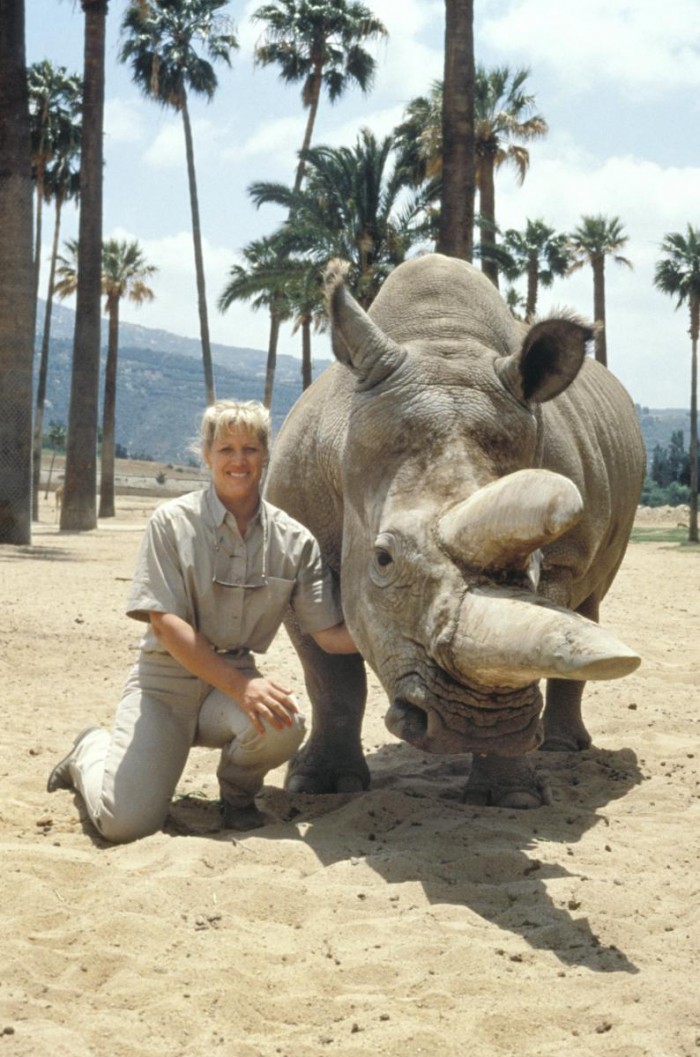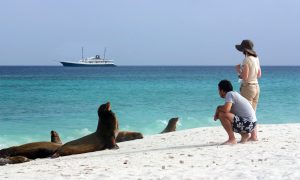As goodwill ambassador to the San Diego Zoo’s Zoological Society of San Diego, Joan Embery has been one of the world’s most high-profile wildlife conservation advocates for over three decades now.
 A professional Fellow of the Association of Zoos and Aquariums, she founded the American Association of Zoo Keepers and hosted numerous TV series on wildlife education. But she is perhaps best known for her thousands of appearances with animals on talk shows such as The Tonight Show (both the Johnny Carson and Jay Leno versions), Good Morning America and Live With Regis & Kathy Lee.
A professional Fellow of the Association of Zoos and Aquariums, she founded the American Association of Zoo Keepers and hosted numerous TV series on wildlife education. But she is perhaps best known for her thousands of appearances with animals on talk shows such as The Tonight Show (both the Johnny Carson and Jay Leno versions), Good Morning America and Live With Regis & Kathy Lee.
Joan Embery currently lives on a 50-acre ranch in Lakeside, California, where she keeps show horses as well as a variety of around 30 “wildlife ambassadors” (including a cheetah, lemur, zebra, toucan and more) she uses in her talks on the importance of environmental education. She also guides tours to East Africa, home to one of the world’s greatest natural wonders.
Here, International Expeditions talks to Embery about her lifelong love of animals, the role of ecotourism in wildlife conservation, and why she keeps going back to East Africa over and over again.
When did you first fall in love with wildlife?
As a child I spent summers with my uncle, who was a veterinarian, in Santa Cruz. That was my early inspiration to go to vet school. I applied at the San Diego Zoo in my first year of college. The only position available to women was working in the children’s zoo, hand-rearing young animals.
A year or two later they were hiring a spokesperson to represent the zoological society in the process of building a wild animal park. Over 600 people applied, and the PR Director gave it to a model with no animal experience. That didn’t work out so well. Once the zoo leadership changed, I got the position. Within a year we were appearing on The Tonight Show.

At what point did you understand the connections between animals and the health of the environment?
In my early years, I was training elephants. Elephants are poached and under extreme pressure because they require lots of water and land to forage, and can be destructive in close proximity to people. It’s not long in working with animals before you realize that the very thing you love has serious challenges for the future. As I transitioned into conservation education and traveled all over the world, I saw tremendous impact to the environment. Animals that have existed for eons are declining in incredible numbers due to growing human populations, competition with livestock, deforestation, political instabilities, disease, etc.
In countries like Madagascar, where they have the highest number of endemic species on the planet, you see the destruction of 85% of the forest habitat. It’s scary, because the birds, reptiles and animals are their resources. At some point, you have to find sustainability. People who economically challenged look at resources as an immediate fix, but the long-term is disastrous for wildlife, plant communities, and ultimately the human populations that rely on those resources. It’s not something we can replace.
What role do you think ecotourism will play in conserving these places and species?
The tourism market, if properly managed, can have a huge positive effect by educating people who become ambassadors when they come home and talk about their experiences. For many countries, it’s a major source of revenue, giving value to the resources we want to protect.
That has been proven with the mountain gorillas. I don’t think that Dian Fossey really wanted people coming into her gorilla habitat, but she realized that people would be their salvation. Until the tourism market was built, their greatest value was to be poached and sold in market and to be poached. But gorilla tourism has provided a major source of revenue, because people pay big dollars to see them. It put Rwanda on the map.
Now you have people from all over the world that have been to Rwanda and seen these gorillas who have such a deep connection that they want to support efforts to conserve the gorillas. If Rwanda steps out of line with the gorillas, there is this whole constituency of people who feel connected to those animals and will stand up for them.
You’ve been guiding trips to East Africa for years. What keeps you going back to the region?
I’ll never forget the first time I saw the Great Migration, which is really awe-inspiring. To see animals in such numbers – a million wildebeest, zebras and all the hooved animals – is hard for anybody to imagine. Along with it, to hit the Ngorongoro Crater as well as the Serengeti… these are some of the best wildlife viewing opportunities on the planet.
I always enjoy taking people there because you can’t be disappointed. There is always something to see – the sights, the sounds, the sunsets, the landscape, and just the expanse of it. It’s mind-boggling to realize that that still exists, and yet there are tremendous pressures. Taking trips over time, I’ve see the population growth and the threat to the wildlife migration corridors. It’s hard to go back once you’ve lost habitat.
Every time I go, I want to shout, “You’ve got to see while it still exists, before it’s too late!” I hate to say that, yet I’ve seen the populations decline just in the short time since my first trip there. Anyone who has the capability to experience that in their lifetime – almost everyone I’ve traveled with – will want to go back over and over again.
Travel to East Africa with Joan Embery!
Join Joan Embery on a Tanzania Safari with International Expeditions in 2016! Joan’s close association with a variety of wildlife conservation groups in Africa ensure you gain unprecedented access to the scientists and workers at the forefront of Africa’s elephant and rhino conservation efforts.
